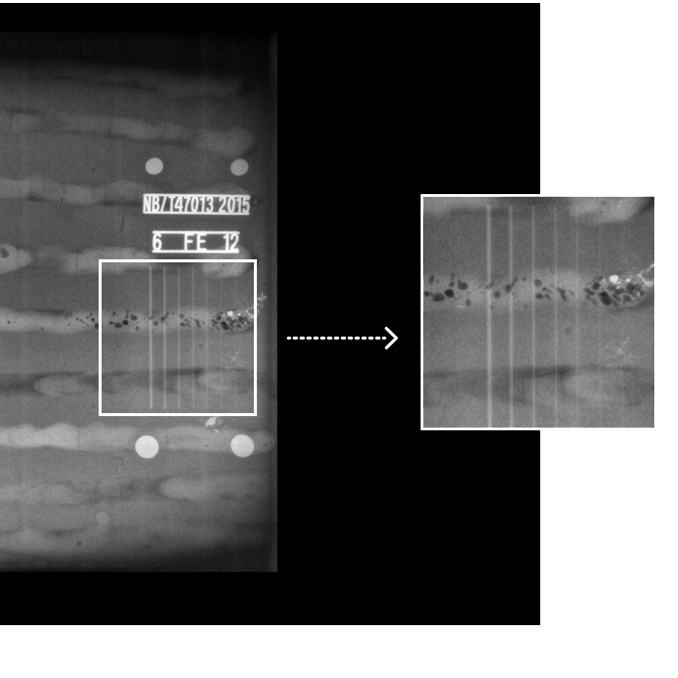Liquid Penetrant Testing (PT)
PT, although the least complex of the methods, is highly sensitive. In manual operation, it uses simple equipment to detect flaws (flaws, with some exceptions, are voids) open to the surface, and works on any material as long as it is not porous. Penetrants are petroleum- or water-based liquids coloured by a dye. Applied to the surface, the liquid seeps into the open voids. It is then removed from the surface and replaced by a white developer. The developer acts as a blotter, drawing out the penetrant trapped in voids. The penetrant stains the developer, indicating the presence and location of flaws.
Magnetic Particle Testing (MT)
MT usually requires electrical equipment to generate magnetic fields. Only metals which can be magnetized are tested by MT. The flaws do not have to be open to the surface but must be close to it. MT works best for flaws which are elongated rather than round. An internal magnetic field is generated in the tested specimen. In locations where flaws (non-magnetic voids) exist, some of the field will leak off the specimen and bridge the voids through the air. Magnetic (iron) particles, dusted over the magnetized area, are attracted by the leakage or external fields. Their buildups form a flaw indication.

The safety hazard inherent in RT dictates a special installation. Material density and its thickness set the limits of usefulness. Internal, non-linear flaws are RT's forte; its two dimensional views sometimes its drawback. RT uses penetrating radiation and works on the principle that denser or thicker materials will absorb more of it. The specimen is placed between a source of radiation and a sheet of radiographic film. A flaw present anywhere within the specimen will absorb less radiation than the specimen itself. The flaw's presence and location will be indicated on the film by an area of higher or darker exposure.
Ultrasonic Testing (UT)
UT uses complex electronic equipment. Any material which transmits mechanical vibrations can be tested. UT detects both linear and non-linear flaws and permits three dimensional interpretation. Evaluation is often difficult. The UT instrument converts electrical pulses into mechanical vibrations or pulses. These pulses travel across the tested specimen and reflect from flaws because of their different acoustic nature. The returning reflected pulses are re-converted to electric energy and displayed as signals on a cathode ray tube (CRT). The position and size of these signals correspond to the position and size of the flaws.
Eddy Current Testing (ET)
ET instruments are small and portable. The method is used only on electrically conductive materials, and only a small area can be inspected at a time. An energized electric coil induces a magnetic field into the tested specimen. The fluctuating magnetic field generates an electric eddy current. The presence of a flaw increases the resistance to the flow of eddy currents. This is indicated by a deflection on the instrument's voltmeter.
-
 Sales@hata-ndt.com
Sales@hata-ndt.com -
 0086-0371-86172891
0086-0371-86172891










